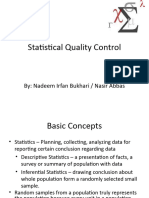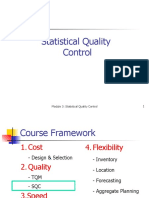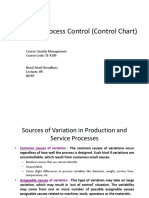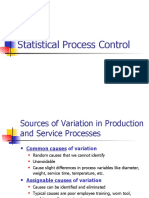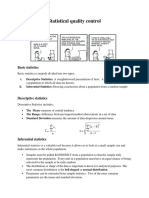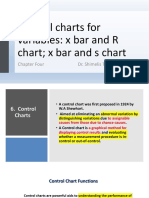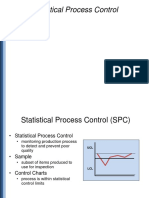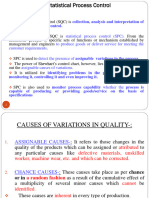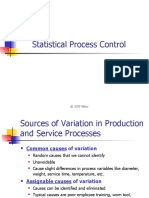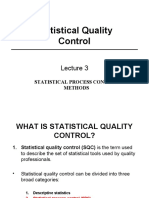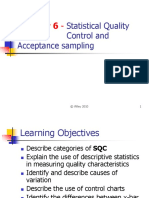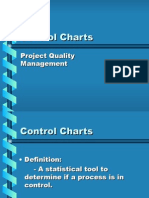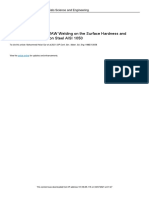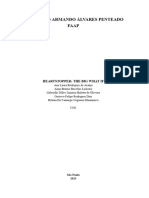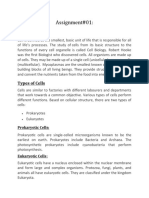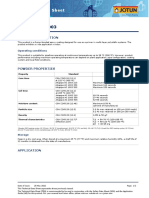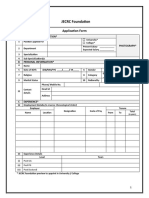0% found this document useful (0 votes)
120 views22 pagesChapter 4 Statistial Process Control (SPC)
Here are the steps to calculate the control limits for a P-chart:
1) Total number of items inspected = 5 samples x 20 tires/sample = 100 tires
2) Total number of defects = 3 + 2 + 1 + 0 + 1 = 7 defects
3) Proportion defective (p) = Total defects / Total inspected = 7/100 = 0.07
4) Center line (CL) = p = 0.07
5) Upper control limit (UCL) = CL + 3√(CL(1-CL)/n) = 0.07 + 3√(0.07(1-0.07)/100) = 0.15
6) Lower control limit (LCL
Uploaded by
Yousab CreatorCopyright
© © All Rights Reserved
We take content rights seriously. If you suspect this is your content, claim it here.
Available Formats
Download as PPT, PDF, TXT or read online on Scribd
0% found this document useful (0 votes)
120 views22 pagesChapter 4 Statistial Process Control (SPC)
Here are the steps to calculate the control limits for a P-chart:
1) Total number of items inspected = 5 samples x 20 tires/sample = 100 tires
2) Total number of defects = 3 + 2 + 1 + 0 + 1 = 7 defects
3) Proportion defective (p) = Total defects / Total inspected = 7/100 = 0.07
4) Center line (CL) = p = 0.07
5) Upper control limit (UCL) = CL + 3√(CL(1-CL)/n) = 0.07 + 3√(0.07(1-0.07)/100) = 0.15
6) Lower control limit (LCL
Uploaded by
Yousab CreatorCopyright
© © All Rights Reserved
We take content rights seriously. If you suspect this is your content, claim it here.
Available Formats
Download as PPT, PDF, TXT or read online on Scribd
/ 22



